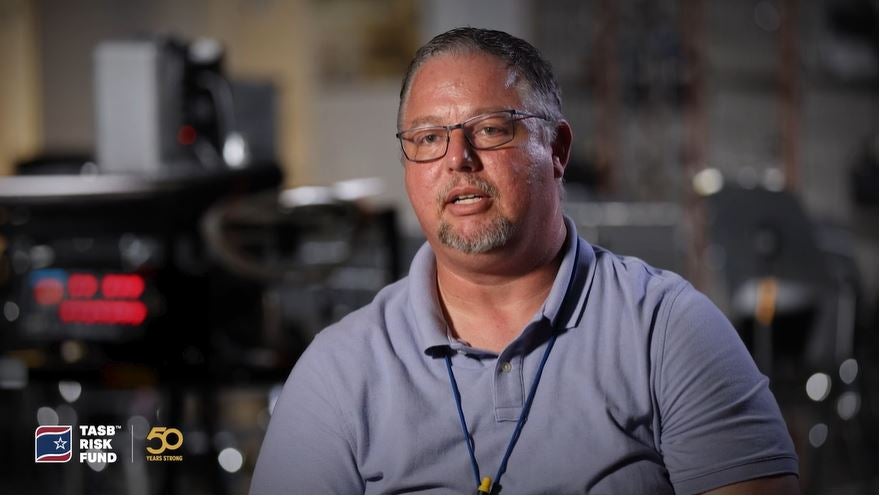Administrators: This is What Auxiliary Staff Needs from You
TASB risk solutions consultants consistently hear from school district auxiliary department leaders who want to be more involved in decisions that impact their teams. Bringing the right stakeholders to the table when planning initiatives can positively impact operations and even budgets over the long term.
Every situation is unique, and there is no universal path to a culture of collaboration. There are, however, questions that will help administrators identify which stakeholders need to be involved. Consider these real stories shared by our risk solutions consultants.
Fast Track to Electric Buses
A superintendent called her shop supervisor with great news: The district qualified for a Clean School Bus Program grant. Unfortunately, the transportation team had not been part of the conversation. Now, it had 90 days to prepare for two new electric buses.
Identifying Stakeholders
- Do the buses meet Texas Department of Public Safety specifications?
- Who will train drivers and mechanics? Electric buses handle differently, and they have different maintenance needs.
- Do you have to alter routes to account for the buses' battery range projections?
- What about battery-charging infrastructure and utility upgrades?
- Are staff and first responders prepared for the unique challenges presented by lithium-ion battery fires?
- What are the insurance implications? Electric buses cost three-to-four times more than diesel buses. By extension, they cost more to insure.
Getting it Done
In the true spirit of schools' "get it done" culture, two maintenance employees propped a ladder in a truck bed and leaned it against a campus wall. One employee climbed the ladder to access the roof while the other held the ladder. No safety manual worth its salt will advise you to prop a ladder in a truck bed—or in anything else—to extend its reach. So, why did the two employees disregard safety procedures? Because the roof was designed without a safe access point.
Identifying Stakeholders
- Which roof materials are best suited for the climate?
- How will the new roof impact insurance coverage, including rates?
- Which contractors have worked well for the district and neighboring districts?
- How will employees and vendors access the roof safely?
- How will access control be managed?
- What preventative maintenance is required, and who will be responsible?
- What special equipment and training will be necessary?
- How will campus security be managed when contractors are on-site?
What Lockdown?
A school went on lockdown after receiving notice of an unauthorized person on the property. While law enforcement investigated the threat, transportation staff assigned to the bus barn down the street were outside washing vehicles. They didn't have a way to get alerts via announcement or the district’s new emergency notification app.
Identifying Stakeholders
- Are you complying with mandated drills and exercises?
- Does our emergency operations plan meet legislative requirements, including risk-specific annexes?
- Who could be affected by each type of emergency? Are some teams/facilities more at risk than others?
- How often are auxiliary service staff included in training and drills?
- How are offsite auxiliary staff notified about campus emergencies?
- What protocols are in place for auxiliary sites and staff to communicate emergencies?
- Do local first responders know your emergency response procedures and their role?
Employees Deserve Wraparound Service, Too
A parent got on a bus and yelled at the driver for disciplining her child the previous day. Administration sent a letter to the parent explaining her behavior didn’t align with district values. Still, the student was allowed to continue riding the bus, and the district took no other action.
Identifying Stakeholders
- How does your district address student behavior?
- Which student behavior information is shared with relevant auxiliary staff, and when?
- What special equipment and behavior management training are necessary?
- What administrative support is necessary for success?
- How does the district define wraparound services for employees as well as students and parents? Remember, staff want to feel empowered to make decisions and supported when they do.
Setting the Table
Of course, keeping everyone in the loop takes time, and nobody has time for unnecessary meetings. Let's circle back to our story about the district that was poised to purchase two electric buses. Administrators could have used these guidelines to involve the right stakeholders at the right time.
- Core group: Required to attend all meetings. Examples: business manager, purchasing, CFO
- Inner group: Attend most meetings and represent a constituency that is critical to the team. Examples: maintenance, transportation, facilities
- Middle group: Invited to meetings when they have insight. Examples: safety/environmental, TASB Facility Services, TASB Risk Management Fund
- Outer group: Does not attend meetings but are kept in the loop. Examples: staff, human resources, board of trustees
Collaboration Fosters Engagement
Strong risk management programs are powered collaboration across the org chart. Involved employees are engaged employees, and engaged employees are among any organization's strongest defenses against risk. If you need help ensuring the right stakeholders have a seat at the table, your TASB risk solutions consultant is here to support you.

David Wylie
David Wylie serves as content developer on the risk solutions team. He brings more than 20 years' experience writing educational content that helps employers protect against workplace accidents, property damage, cybercrime, and other losses.
You May Also Like…
View All Related Insights
Celebrating 50 Years of Service to Public Education
The Fund has served as a strong, stable, and adaptable coverage provider to Texas public schools since 1974.
